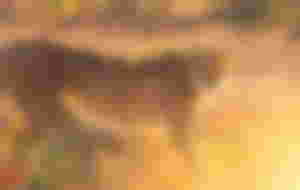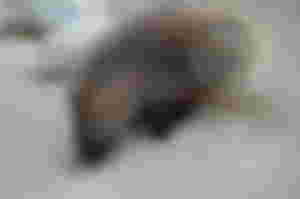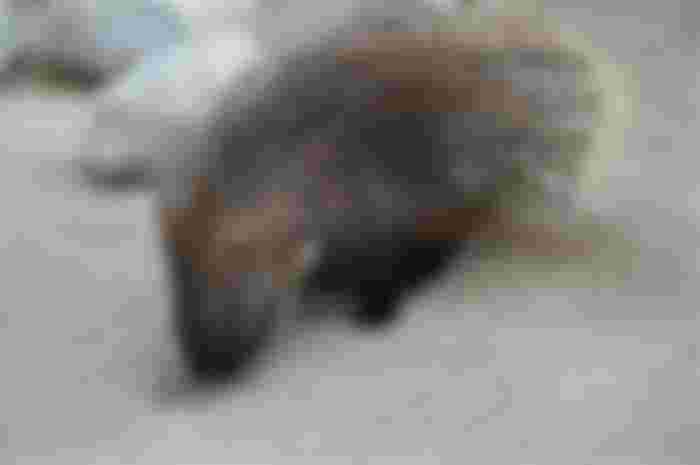If one were to ask the habits of a toad, many wouldn’t really have much knowledge of them handy in their brains. They are not rare like the Orangutans yet, are not as famous as some other members of the wild These are the animals that don’t often grace our books except in pictures and we don’t keep much information about them in our heads, unlike the others. It’s time we learnt more about them. Welcome to the infamous wild!
Just big cats and a little more: The Cheetah

Many people do not know much about the Cheetah. In fact, it isn't a very popular cat. Save the fact that it looks a bit like leopards, and it's remarkably fast, little information about it is common.
You know why these animals are called 'big cats'. They're from the cat family and they're well...big. While many believe that these are part of the most dangerous predators on the planet and that they see to kill, the Cheetah is actually much less ferocious than we see it to be and with much more amazing abilities.
If you had cats and one of these cats purred or meowed, you wouldn't run, no. Normally, one would scratch its back and give it a pet, or some water. Now, what if it's a really large cat? Cheetahs unlike other cats like; The Lion, Tiger, Leopard, etc. cannot roar (because their voice box consists of a fixed structure with vocal cords that are divided) instead, they purr like regular housecats. Cheetahs also chirp (yes, like birds or something like puppies in need of help) and churr. Not so scary now, eh?
Cheetahs are less aggressive than the other big cats. This gives room for them to be bullied for their food especially by other cats, and vultures!. However, this doesn't mean that they don't bite (or do more than that) don't ever try them there.
Cheetahs are the fastest animals in the world. An average Cheetah can run faster than a human athlete. A Cheetah once covered a 100 meters distance in 5. 95 seconds while the world's known fastest man ran the same distance in 9.58 seconds. That makes a whole large difference and it means that the chances of survival of a human against a race with a Cheetah are low.
Cheetahs are known to be swimmers although, they do not enjoy it much. When they have to, Cheetahs can cross a river (actually swim) by themselves. These creatures, however, aren't very wonderful tree climbers. The diet of Cheetahs is like many other wild cats- Carnivorous. They eat weaker prey. The Cheetah also drinks little water. They only need some water every two days or so.
Apart from their incredible speed, Cheetahs are also famous camouflage masters. Not like the Chameleon, well! But, their special physical features have helped them become very efficient hunters. Ever looked at some and wondered what their spots are all about? These spots help them become less noticeable. Also, Cheetahs have tear-like marks that run from their eyes to the bottom of their heads. These tear marks are said to deflect the sun rays and help them have superb night vision. Thanks to their excellent body flexibility that help them with speed, their camouflage, and their night vision, Cheetahs are more than just another random species of wild cats.
Unfortunately, though, the Cheetah is one of the animals threatened with extinction. Today, there are estimated to be only about 7,100 Cheetahs left in the wild. Through human activities, Cheetahs have been forced out of their habitats and are being killed and reproduce very little. Gradually but steadily, these animals are being wiped off the face of the planet.
Cute but sharp: Porcupines

Porcupines are these small rodents with a pretty particular feature- their quills. These come like hair on its back and head and are actually in fact, modified hair composed of keratin. The sharp quills on the body of a porcupine help it protect itself against predators.
Porcupines usually roll into a ball and let up their quills, ready to 'stab' an enemy as a means of self-protection and defense. Unlike the common belief that Porcupines throw their quills at enemies, the quills are the ones who rather, get picked up by the enemies' skins and stay there. It is not poisonous but can be painful and if not properly removed, cause infection and scarring to the victim. The Porcupines by themselves also grow new quills to replace lost ones.
Porcupines can be used as pets and can be cute ones too. They aren't very aggressive to humans and normally don't attack unless provoked. Porcupines, however, tend to love seclusion and can be a little hard to take care of. In this, the biggest problem actually, is the quills. It isn't very nice to have a pet that you can't really touch much. Also, Porcupines stink. Normally, they release extra stench to ward off predators still, they stink!
Porcupines are very much still in the wild. In fact, they are so there that they are common neighborhood nuisances. Porcupines are safe to eat and their killing isn't restricted by most countries so, if you feel like eating the delicious meat instead of keeping them as pets, then you're free to!
This is inspired by a wildlife prompt by @JonicaBradley
The lead image is by Sammy Wong on Unsplash.

